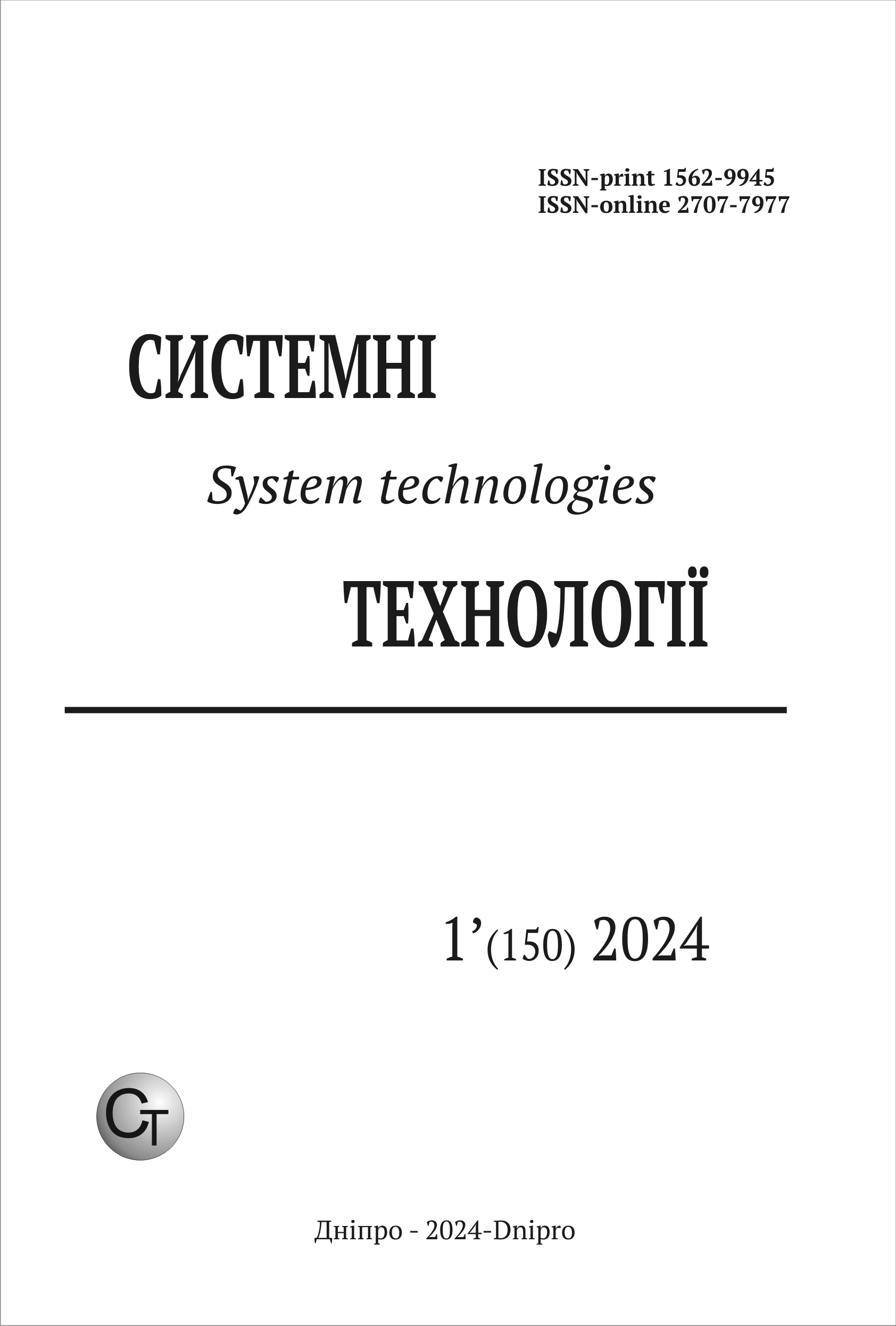ІНФОРМАЦІЙНА ТЕХНОЛОГІЯ ПОПЕРЕДНЬОЇ ОБРОБКИ СУПУТНИКОВИХ ЗОБРАЖЕНЬ З ВИКОРИСТАННЯМ ЗГОРТКОВОЇ НЕЙРОННОЇ МЕРЕЖІ
DOI:
https://doi.org/10.34185/1562-9945-1-150-2024-04Ключові слова:
попередня обробка, злиття зображень, згорткова нейронна мережа, спектральна інформація, просторова здатність.Анотація
Останніми роками зросла потреба у супутникових зображення високої просторової роздільної здатності через їхню важливість у практичних застосуваннях, таких як землевпорядкування, навігація, екологічний моніторинг та розробка інфраструктурних проєктів. Методи паншарпенінгу є ефективними засобами збільшення просторової роздільної здатності багатоканальних зображень. Хоча існує значна кількість запропонованих алгоритмів паншарпенінгу, але жоден з них не може бути уні-версальним для всіх типів датчиків та демонструє різні результати. У статті прове-дено огляд методів злиття супутникових зображень високої просторової роздільної здатності, а також запропоновано інформаційну технологію попередньої обробки цифрових супутникових зображень з використанням згорткової нейронної мережі. Це дозволило ефективно вилучати деталі текстури та просторові залежності, а також локальну та нелокальну інформацію. В роботі порівнювалися результати запропонова-ної технології з існуючими методами паншарпенінгу, такими як Gram-Shmidt, HSV, Wav+HSV, ATWT, AWLP, BDSD, Brovey, HPF. Результати тестування, проведеного на восьмиканальних зображеннях, отриманих супутником WorldView-2, підтверджують, що запропонована технологія (ERGAS=0.32, RMSE=0.28б SSIM=0.71, PSNR=37.60) до-зволяє досягти високої спектральної та просторової якості багатоканальних зобра-жень та перевершує існуючі методи.
Посилання
Luo Xin, Tong Xiaohua, Hu Zhongwen. Improving Satellite Image Fusion via Generative Adversarial Training // IEEE Transactions on Geoscience and Remote Sensing. 2020. – P. 1-14. DOI:10.1109/TGRS.2020.3025821.
Kashtan V.Yu., Hnatushenko V. V. Automated pansharpening information technology of satellite images // The scientific journal «Radio Electronics, Computer Science, Control». - №2 (57). - Zaporizhzhia, 2021. – Р.123-133.
Mateo-Sanchis, Anna Piles, Maria Muñoz, Jordi Adsuara, Jose Pérez-Suay, Adrián Camps-Valls, Gustau. Synergistic Integration of Optical and Microwave Satellite Data for Crop Yield Estimation // Remote Sensing of Environment. - Volume 234, 2019
Rahimzadeganasl A, Alganci U, Goksel C. An Approach for the Pan Sharpening of Very High Resolution Satellite Images Using a CIELab Color Based Component Substitution Al-gorithm // Applied Sciences. - 9(23):5234, 2019.
DOI: 10.3390/app9235234
Kahtan V.Yu., Hnatushenko V. V. A Wavelet and HSV Pansharpening Technology of High Resolution Satellite Images // Intelligent Information Technologies & Systems of In-formation Security IntelITSIS 2020. - Khmelnytskyi, Ukraine, June 10-12, 2020. – P. 67-766.
Duran J., Buades A. Restoration of pansharpened images by conditional filtering in the PCA domain // IEEE Geosci. Remote Sens. Lett. - 16 (3), 2019. – P. 442–446.
Alcaras E, Parente C. The Effectiveness of Pan-Sharpening Algorithms on Different Land Cover Types in GeoEye-1 Satellite Images // Journal of Imaging. - 9(5):93, 2023. DOI:10.3390/jimaging9050093.
Addesso P., Restaino R., Vivone G. An Improved Version of the Generalized Laplacian Pyramid Algorithm for Pansharpening // Remote Sensing. - 13(17):3386, 2021. DOI:10.3390/rs13173386.
Ghahremani M., Ghassemian H. A Compressed-Sensing-Based Pan-Sharpening Method for Spectral Distortion Reductio //. IEEE Transactions on Geoscience and Remote Sensing. - 54, 2016.- P. 2194 - 2206. 10.1109/TGRS.2015.2497309.
Huang W., Xiao L., Liu H., Wei Z., Tang S. A New Pan-Sharpening Method With Deep Neural Networks // IEEE Geosci. Remote Sens. Lett. – 12, 2015. –
P. 1037–1041.
Imani M. Texture feed based convolutional neural network for pansharpening // Neuro-computing. - 398, 2020. – P. 117–130.
Wei Y., Yuan Q., Shen H., Zhang L. Boosting the Accuracy of Multispectral Image Pan-sharpening by Learning a Deep Residual Network // IEEE Geosci. Remote Sens. Lett. - 14, 2017. – P. 1795–1799.
Yang J., Fu X., Hu Y., Huang Y., Ding X., Paisley J. PanNet: A Deep Network Architec-ture for Pan-Sharpening // In Proceedings of the 2017 IEEE International Conference on Computer Vision (ICCV). - Venice, Italy, 22–29 October 2017. –
P. 1753–1761.
Li H., Jing L., Tang Y. Assessment of Pansharpening Methods Applied to WorldView-2 Imagery Fusion // Sensors. - 17(1):89. – 2017. DOI:10.3390/s17010089.
Kashtan V.Yu., Hnatushenko V.V. Doslidzhennia efektyvnosti metodiv zlyttia suputnykovykh znimkiv vysokoho prostorovoho rozriznennia // Prykladni pytannia matematychnoho modeliuvannia. - Tom 3.- Kherson, 2020. – C.117-127.
Yang, F.; Yang, H.; Fu, J.; Lu, H.; Guo, B. Learning texture transformer network for im-age super-resolution // In Proceedings of the IEEE Conference on Computer Vision and Pat-tern Recognition. . - 2020. – P. 5790–5799.
Завантаження
Опубліковано
Номер
Розділ
Ліцензія
Авторське право (c) 2024 Системні технології

Ця робота ліцензується відповідно до ліцензії Creative Commons Attribution 4.0 International License.















